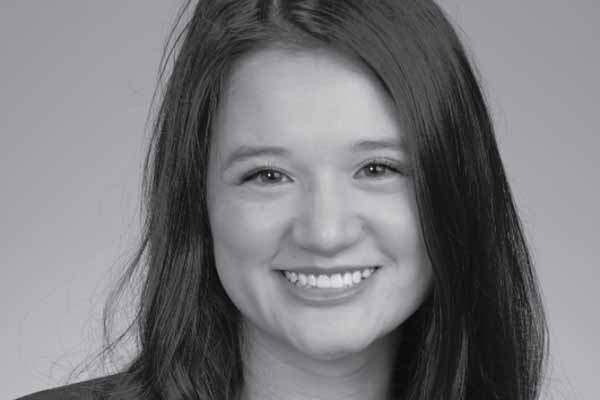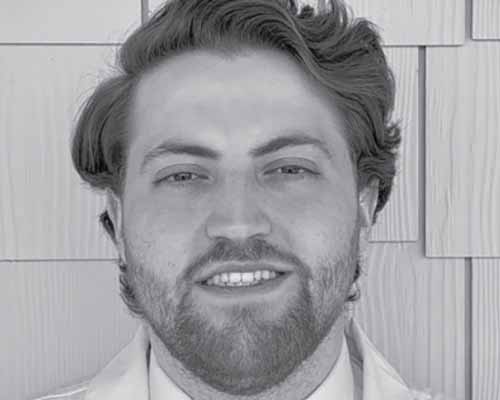COVID-19’s appearance earlier this year froze medical students in an awkward place.
Many of them wanted to be on the front lines fighting the disease, but their unfinished education and a shortage of personal protective equipment (PPE) prevented that. At the same time, all U.S. medical training in direct patient care abruptly landed on the backburner as the entire health care system shifted toward containing the pandemic.
The Association of American Medical Colleges (AAMC) issued guidance for medical schools to suspend students’ clinical clerkships and recommended that “unless there is a critical health care workforce need locally, we strongly suggest that medical students not be involved in any direct patient care activities.” In addition, health care facilities that sponsored medical student training asked that medical students be reassigned so hospitals could preserve PPE and focus efforts on providing life-saving care.
Texas medical schools surveyed by the Texas Medical Association followed the AAMC recommendation, pulling students out of clinical settings and substituting in-person classes with online instruction.
Bobby Gerich, a third-year medical student at McGovern Medical School at UTHealth in Houston, praised his school’s rapid adjustment during the crisis. But like many of his peers, he missed working with patients.
“Third year of medical school is taught on the wards,” he told Texas Medicine in an email interview. “We interact with patients and perform medical procedures. Online courses are no substitute for on-the-field experience. I understand that desperate times call for desperate measures. But I cannot wait to get back on the wards.”
Not all physicians agree that medical students should remain sidelined. Articles in JAMA Network (tma.tips/JAMAStudents) and the Annals of Internal Medicine (tma.tips/AnnalsStudents) have argued that medical students could serve in useful roles that take pressure off physicians and other health care professionals, like helping local health agencies implement rapid testing, or staffing community call centers that offer guidance to symptomatic patients.
Some students got creative to satisfy their desire to help fight COVID-19 by working on drives to collect personal protective equipment, organizing babysitting networks for physicians, and sewing masks.
The 2020 Main Residency Match went on as scheduled, but not as usual. (See “Growing Residents,” page 42.) Graduating medical students saw traditional Match Day and graduation ceremonies evaporate, but at least they have a chance to help out starting this summer – and in some places sooner.
In New York state, for instance, where hospitals were overwhelmed by the pandemic, graduating students from some schools were allowed as of April to work in hospitals under a physician’s supervision to help ease the burden of fighting COVID-19.
Although this did not happen in Texas, as this story went to press in April, Gov. Greg Abbott had removed the restriction that residents and fellows can provide patient care only within their training programs. That move was expected to free up about 9,000 physicians-in-training to fill gaps in health care, as needed, under physician supervision.
With all of these changes happening, Texas Medicine spoke with several students about their experiences since COVID-19 radically changed medical education in Texas. Here’s how three of them have spent their time.

Amanda Arreola, The University of Texas Rio Grande Valley School of Medicine, Edinburg
Like just about any fourth-year medical student, Amanda Arreola planned to make a big deal out of graduating. A trip to Portugal after Match Day with her boyfriend was supposed to be followed up with a family party at a rented house on South Padre Island for graduation day.
COVID-19 made all that disappear.
“I’m sad that I didn’t get to celebrate with my friends,” said Ms. Arreola, chair of TMA’s Medical Student Section. “I’m sad that my family won’t be able to see me graduate. I’m the first person in my family to go to college and to graduate from medical school. And now no one’s getting to [celebrate]. We don’t have a cap and gown. We almost don’t have any photographic evidence that we’re graduating at all because everything has been shut down.”
Instead, Ms. Arreola spent the final months of medical school sheltering with her family in El Paso and finishing off her final courses. As of this writing, she was slated to start her dermatology internship in June at JPS Health Network in Fort Worth. But she says it’s more likely she’ll be called on to do work outside her specialty.
“I know going into my intern year I’m going to be intubating people,” she said. “That’s where we are as a country. We’re all going to be called on. It’s very surreal.”
It’s also scary, not just for her but for family and friends.
“My mom, if she could keep me home until this is over, I know I wouldn’t leave this house,” she said. “But right now [fourth-year students] are being quiet and getting emotionally prepared to being exposed to COVID and just rolling with it.”
It’s helped to speak with former Medical Student Section members who already have encountered the disease while working in residencies across the country, Mr. Arreola says. Also, her boyfriend is a fourth-year medical student in New York who graduated early and began working with COVID-19 patients to help with the workforce shortage there.
This year’s graduating class has lost some of the traditional rites of passage that fourth-year students have come to expect, she says. But they are living through a unique time that will ultimately help them in the exam room and better prepare them for the next pandemic.
“We will have all treated very sick people, and that’s what makes good doctors,” she said. “So I think [this experience] will help us. And I think it’s building a camaraderie [among medical students] that we haven’t seen in a long time.”

Jessica Kim, McGovern Medical School at UTHealth, Houston
Third-year student Jessica Kim was in the process of starting an anesthesiology clerkship when COVID-19 threw her career plans into professional and personal limbo.
“My roommates flew home to be with their families before everything got as serious as it is now, so I’ve been alone during this time,” she said in an email interview. “You almost go stir crazy if you don’t fill your days with meaningful work. I’ve been in constant contact with friends and family, though, so it’s not as difficult as I imagined it would be.”
Since she wasn’t learning in clinical settings, Ms. Kim has completed classes and case studies online for her remaining third-year rotations, she says.
“We’ll make up clinical time and take our shelf exams before we start our MS4 rotations when all of this is over,” she said.
At the same time, she helped other McGovern medical students solicit PPE donations from local businesses. She also borrowed a sewing machine and began sewing cloth masks to help alleviate the PPE shortage for area physicians.
Unfortunately, some materials needed to make them – like elastic and wire – were in short supply.
“Also, as med students, we have such a limited amount of money to spend on materials for the number of masks we hope to make,” Ms. Kim said.
But McGovern students started sharing resources to make more masks, she says.
Practically speaking, online classes are not as helpful as working directly with patients, Ms. Kim says. And there will be “minor stresses and setbacks” for her and other classmates as they apply for residencies as fourth-year students.
But there are compensations for studying medicine through a pandemic, she says.
“I’m reminded of my ‘why’ [for becoming a physician] nearly every day, which is my biggest motivator,” she said.

Abdurrahman Kharbat, Texas Tech University Health Sciences Center School of Medicine, Lubbock
Abdurrahman Kharbat’s spring break was one to remember – for all the wrong reasons.
“I went to Houston for the first part of spring break and got a gut feeling that transportation might shut down [as news of the pandemic spread], so I came back to Lubbock,” said the first-year student at Texas Tech University Health Sciences Center (TTUHSC) School of Medicine.
He came back just in time. Local and state governments soon issued “stay-at-home” orders to create the social distancing needed to fight the disease.
His medical school provided online and pre-recorded classes that kept his studies going. But he thought that as a medical student he might help health care professionals during this time of need.
“When the pandemic first broke out, there was this sentiment among medical students that we may be employed in some capacity,” Mr. Kharbat said. “[But] I think it’s understood that we’re not ready to deal with something like this.”
Instead, he jumped at the chance to become the student leader on a team working to decontaminate N95 masks for reuse. (See “Paying the Price for PPE,” page 25.) The program run by TTUHSC uses hydrogen peroxide vapor, a method that won limited emergency approval from the Food and Drug Administration in March.
Many hospitals have small decontamination chambers that can handle a few masks. The team Mr. Kharbat joined set up a chamber that could handle 10,000 masks at a time. And TTUHSC offered to pay for the decontamination process for any physicians or health care facilities that could transport their masks to Lubbock.
The decontamination effort has been especially helpful for health care institutions in Lubbock like University Medical Center, as well as for physicians and smaller hospitals and clinics in West Texas.
“We’re really excited to be able to help area hospitals and to be taking care of our staff this way,” Mr. Kharbat said.
This kind of work also helps break the isolation that he and other students are going through, he says.
“I’m the kind of person who likes routine and structure, and not having a routine and a structure to go back to [once he returned to school] has been a little upending,” he said. “Other than that, it’s just been staying at home, social isolating for the greater good. But it can be tough at times.”
Tex Med. 2020;116(6):16-18
June 2020 Texas Medicine Contents
Texas Medicine Main Page